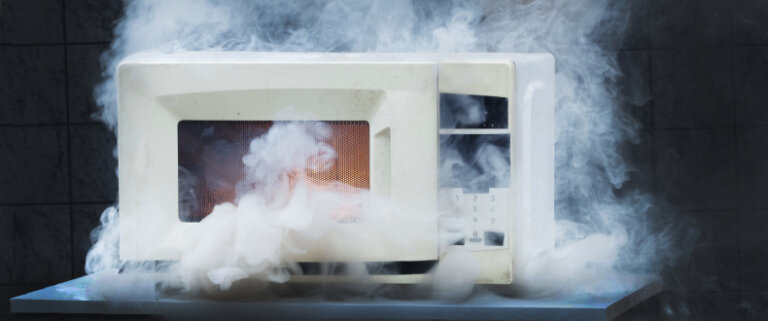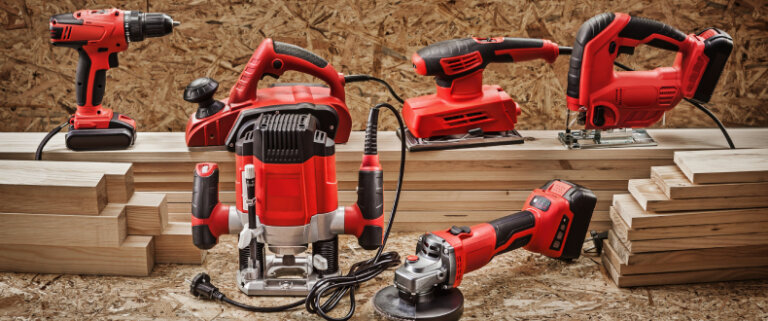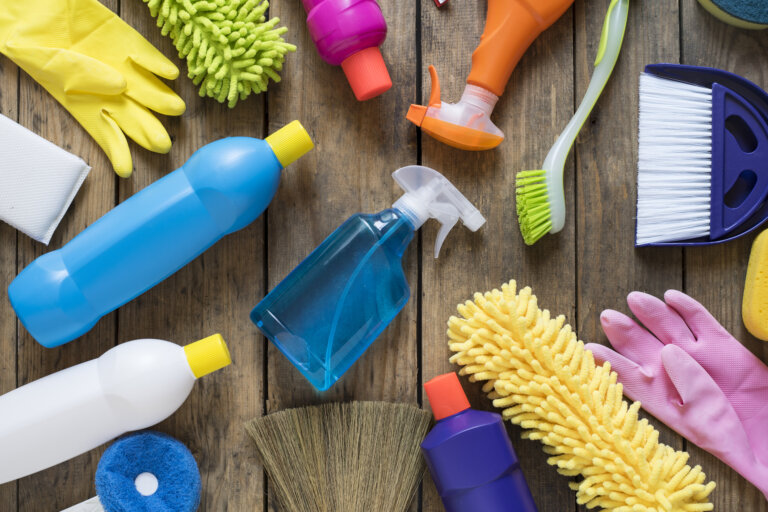Product Liability Basics
Retaining an attorney who has the experience and resources to effectively handle a product liability case is essential when you suffer injuries from a defective product. California product liability laws provide remedies if you are injured because of a product’s poor design, manufacturing flaws, or inadequate warnings. By understanding these laws, you increase your chances of receiving the compensation you deserve for your injuries.
What Is Product Liability?
Product liability is a legal concept that describes the responsibility of manufacturers, distributors, and sellers if their products injure someone. If you buy a product, you expect it to work safely and effectively. However, if the product causes harm, product liability laws allow for compensation for your injuries.
Product liability laws ensure that companies cannot simply sell products without ensuring their safety. California law allows you to take legal action against those involved in making or selling a product that harms you. This could include the manufacturer, the wholesaler, the retail store, and any other parties involved in the supply chain.
The laws aim to protect consumers like you by ensuring companies prioritize product safety. It also motivates businesses to thoroughly test their products before putting them on the market. If you ever get hurt by a product, understanding product liability can help you protect your rights and seek the support you need to recover.
Who Can Sue Under Product Liability Laws?
Under California product liability laws, anyone who suffers a defective product injury can sue for compensation. This includes the person who bought the product and anyone who uses it, borrows it, or otherwise gets hurt by it. For example, you have the right to sue if you receive a defective product as a gift and it injures you. Similarly, if you use a friend’s product that malfunctions and causes injury, you can file a product liability lawsuit to seek compensation.
The ability to sue extends to family members who might suffer losses due to injuries to their loved ones. For instance, if a defective product severely injures someone, their spouse might be able to sue for loss of companionship or emotional distress. Similarly, if someone dies as a result of a product defect, surviving family members could sue for wrongful death.
California laws hold manufacturers, distributors, and retailers accountable for the safety of their products. These laws exist to prioritize public safety and protect all consumers affected by defective products.
Who Can Be Sued in a Product Liability Case?
Each entity involved in making, distributing, and selling a product has a role in ensuring it is safe for use. Several parties might be subject to product liability lawsuits if a product fails and injures a consumer. Here are some examples of parties that injured consumers could sue in a California defective product case:
- Manufacturers: Manufacturers include companies and individuals that create products. If a product is defective and causes injury, consumers can sue the manufacturer for failing to ensure the product’s safety and effectiveness. Manufacturers are responsible for adequately testing their products and ensuring they meet safety standards before releasing them. Manufacturers can be legally responsible for any resulting harm if their products injure consumers.
- Distributors and Wholesalers: Distributors and wholesalers purchase products from manufacturers and supply them to retailers. They can face lawsuits if they distribute defective products that cause injury. Even though distributors might not be involved in the manufacturing process, they are responsible for ensuring the products they supply are safe for public use. Whether or not a distributor knows a product is dangerous, they can still be held accountable for related injuries.
- Retailers: Injured consumers can also sue retail stores that sell products directly to the public. Retailers must ensure that the products they offer are safe. If they sell defective products, they can be liable if those products injure consumers. The law expects retailers to be vigilant and remove potentially harmful products from their shelves as soon as they know of any safety issues.
Can Multiple Parties Be Held Liable in a Product Liability Claim?
Yes, multiple parties can be liable for your injuries in a product liability claim in California. This includes anyone involved in creating and distributing the defective product, from the initial design to the point of sale. These parties might include the manufacturer who designed and made the product, the distributor who delivered it to stores, and the retailer who sold it to you.
Holding multiple parties liable is an excellent way to ensure you receive full compensation for your injuries and losses. A knowledgeable attorney can identify all the parties responsible for the defective product that injured you and work hard to hold each of them accountable.

How Long Do You Have to Make a Product Liability Claim?
For most product liability cases, California law gives you two years from the date of the injury to initiate a lawsuit. This means you must act quickly to preserve your right to demand compensation from responsible parties if you get hurt by a defective product. Waiting too long could mean losing your right to file a claim. If the two-year period passes, so does your right to sue for compensation related to your injury. If you are considering a product liability claim in California, you should consult a lawyer promptly so they can help you explore and protect your rights.
What Does a Plaintiff Have to Prove in a Product Liability Case?
In most personal injury cases, the injury victim (plaintiff) must show that the defendant did something wrong or failed to do something necessary to hold them liable. In other words, the plaintiff must show that the defendant was negligent. However, California uses a strict liability standard for product liability cases. This means that a manufacturer, distributor, or retailer can be liable for injuries resulting from a defective product without the need to show that they breached a duty of care to the consumer.
Under the strict liability standard, the plaintiff only needs to prove that the product that injured them was defective and caused harm despite being used as intended or in a reasonably foreseeable way. “Reasonably foreseeable” use refers to how you might expect an average consumer to use a product. This includes the product’s primary purpose and any other logically anticipated uses. For example, if someone uses a chair to reach a high shelf, this could be considered a reasonably foreseeable use of the chair. In this scenario, the manufacturer could be liable if the chair broke under the user’s weight.
In a strict liability case, the focus shifts from the defendant’s behavior to the product’s condition. The injured party only needs to demonstrate that the product was defective and that this defect directly caused their injury. This can significantly streamline the legal process for plaintiffs, as they do not need to establish negligence or fault but only that the product was unsafe for its intended or reasonably foreseeable use.
What Are the Elements You Must Prove in a Product Liability Claim?
You must prove the four following elements to hold a manufacturer, distributor, or retailer accountable in a California product liability claim:
- The defendant produced, distributed, or sold a defective product.
- The product was defective before it ever reached you.
- You used the product as anyone reasonably would expect.
- You suffered harm because of the product’s defect.
Common Product Defects
When you buy a product, you expect it to be safe and effective. However, sometimes, products can have defects that cause injury or harm. Understanding the different types of defects is important because it can help you identify when you might have a valid product liability claim. Generally, product defects fall into three main categories: design, manufacturing, and marketing defects. Each type of defect involves a different aspect of the product and how it reaches the consumer.
Product Design Defects
A design defect occurs when a product is inherently unsafe from the drawing board, before it even gets made. This means that something in the product’s design is flawed and poses a risk to users, regardless of how well it is made or marketed. For instance, a car designed with a fuel tank in a position that makes it prone to exploding in the event of a rear-end collision has a design defect.
To prove a design defect, you must show that the product’s design did not perform as an ordinary consumer would have expected and that it caused the consumer harm. Another way to prove a design defect is by proving that the risks associated with a design that caused harm are outweighed by the benefits. Design defects can be particularly dangerous because they affect every item coming off the production line, not just one batch or item.
Manufacturing Defects
Unlike design defects, manufacturing defects occur during the production or assembly of a product. These defects typically arise from errors in the manufacturing process that cause deviations from the product’s intended design. For example, if every bicycle in a batch gets produced with a crack in the frames due to a factory mistake, this is a manufacturing defect.
Manufacturing defects are usually more sporadic than other types of defects, often affecting only a single batch of products or even just one item. To prove a manufacturing defect exists, you must demonstrate that the product that caused injury differed from the manufacturer’s intended design or specifications and that this deviation made the product unsafe. Once identified, manufacturing defects often result in recalls to prevent further injuries.
False Advertising & Marketing
Advertising and marketing defects, also known as “failure to warn” defects, involve problems not with the design or manufacturing of a product but with how it is presented to the public. This type of defect occurs when the manufacturer or distributor does not provide adequate instructions or warnings about the product’s use, which could prevent foreseeable risks of harm. For example, if a powerful cleaning chemical is sold without adequate warnings regarding its use in enclosed spaces and the fumes harm someone, this is a marketing defect.
Proving this kind of defect involves showing two key factors. First, you must show that a product’s marketing or packaging did not adequately clarify the risks associated with its use. Second, you must demonstrate that you could have avoided your injuries if you had received proper warnings. Adequate warnings and truth in advertising are essential for ensuring that consumers are fully informed about the products they use and the potential risks involved.
What If a Product Is Accidentally Defective?
If a product turns out to be accidentally defective, it can still give rise to a product liability claim. This is because the key point in product liability law is that the product caused harm due to its defective condition. In California, the laws around product liability focus on the product’s safety rather than the manufacturer’s or seller’s intentions. This means that manufacturers and sellers are still responsible even if a defect happens by accident.
For example, if a toy company accidentally uses toxic paint on a batch of toys due to a mix-up at the factory, and children become sick from playing with these toys, the company can still be liable. The accidental nature of the defect does not excuse the company from responsibility. California law ensures that businesses take all possible precautions to prevent defects and protect consumers.
Therefore, if you get hurt by a product that turns out to be defective by accident, you still have the right to seek compensation for your injuries. You would need to show that the product was defective, that the defect caused your injury, and that you were using the product as it was intended or in a reasonably foreseeable way.
Product Defects vs. Recalls
A product defect is a fundamental flaw that makes a product unsafe or unfit for use. This flaw can be due to issues in design, manufacturing, or marketing. When a product has a defect, it can cause harm or pose risks to users.
A recall, on the other hand, is an action that a product manufacturer takes to address a product defect identified after the product has been released to the market. Companies issue recalls to remove defective products from the market or to fix them before they cause further issues. Regulatory agencies sometimes recommend manufacturers issue recalls after receiving consumer reports of harmful defects. Recalls are a response to the discovery of safety issues, including defects that could harm consumers.
For instance, if a car model has a defective brake system that could lead to accidents, the manufacturer might issue a recall. Recalls aim to ensure that defects are corrected to prevent accidents and protect the public. Recalls are proactive steps that manufacturers and regulatory agencies take to manage defects and protect consumers.

Examples of Defective Products in Product Liability Cases
Sometimes, defects occur that significantly impact product safety and effectiveness. These defects can occur due to anything from design errors to mistakes during the manufacturing process or even issues with how the product is marketed. Below are some common examples of product defects that can give rise to product liability cases:
- Overheating electronic devices
- Faulty brakes on a vehicle
- Weak chair legs that easily break
- Toys with small parts that pose choking hazards
- Electrical appliances with inadequate wiring
- Flammable clothing materials
- Cracked protective gear like helmets
- Leaking chemical containers
- Car tires prone to blowouts
- Poorly balanced furniture that tips over easily
- Contaminated food products
- Expired medications sold in stores
- Sunglasses that don’t provide UV protection
- Baby cribs with gaps that are too wide
- Malfunctioning smoke detectors
- Pesticides that do not list all active ingredients
- Electronics that emit harmful radiation
- Cosmetics containing harmful allergens
- Airbags that do not deploy in accidents
- Lead paint on children’s toys
- Defective power tools that start unexpectedly
- Sports equipment that breaks under normal use
- Space heaters that can ignite nearby objects
- Washing machines that leak water
- Bicycle chains that break during use
- Cookware coatings that flake off into food
- Defective medical implants
- Light bulbs that explode during use
What Compensation Can Victims Get After They’re Harmed by a Defective Product?
If you get hurt by a defective product in California, you can seek compensation for various losses you experience due to the injury. This compensation is intended to cover different aspects of the impact the injury has had on your life, from medical expenses to the effects on your ability to earn money. Here are the types of losses for which you could pursue compensation in a California product liability claim:
- Medical Costs: You could receive compensation for the costs of any medical treatment you needed because of the injury. This includes hospital bills, medications, physical therapy, and any future medical care related to your injury.
- Lost Wages: If you missed work because of your injury, you could get compensation for the money you would have earned during that time. This also includes loss of earning capacity if the injury affects your ability to work and earn money in the future.
- Pain and Suffering: You can seek compensation for the subjective costs of the physical and emotional distress you experience due to your injury. This accounts for the discomfort, anxiety, and other negative effects you’ve endured because of the injury.
If a court finds that the defendant’s conduct was especially outrageous or reprehensible, you might also be entitled to punitive damages. These are meant to punish the wrongdoer and deter similar behavior in the future. A California product liability lawyer can review your case to determine the types of compensation you could claim and whether punitive damages might be available.
How Are Product Liability Claims Resolved?
Product liability claims typically resolve in one of two ways: through settlements or trial verdicts.
Many product liability claims end in settlements. This means the injured party and the defendant agree on an amount of money to be paid the defendant will pay to the injured party without a jury weighing in. Settlements are often quicker and less costly than a trial. Both sides often prefer settlements because they allow each party to avoid the unpredictability of a trial verdict, maintain privacy, and keep legal expenses low.
If a settlement is not possible, the product liability case might go to trial. At trial, both sides present their evidence and arguments, and a judge or jury makes a decision. If the judge or jury finds in favor of the injured party, they will decide on the compensation the defendant must pay. Trials can be lengthy and involve a detailed examination of the facts of the case. However, sometimes a trial is necessary for a fair outcome.
Hiring a Product Liability Lawyer & Filing a Claim
If you’ve been injured by a defective product in California, hiring a product liability lawyer and filing a claim are your next steps toward seeking compensation. A skilled lawyer can help you understand your options and handle every aspect of the legal process while you focus on healing. They can gather evidence, such as medical records and expert testimonies, to build a strong case and demand the recovery you deserve.

Should You Hire an Attorney for a Product Liability Claim?
Yes. Hiring an attorney for a product liability claim is a wise decision if a defective product has injured you. An experienced lawyer can significantly increase your chances of getting fair compensation for your injuries. Attorneys understand the complex laws surrounding product liability in California and can effectively handle the legal process on your behalf.
An attorney can assess the full extent of your injuries and losses so you can claim all possible compensation for the harm you suffered. They will handle all the necessary legal procedures, from gathering evidence and filing paperwork to negotiating with the other party’s lawyers. They will also represent you in court if your case goes to trial. Having a lawyer by your side strengthens your legal claim and leaves you free to focus on healing, knowing that a professional is advocating for your interests.
What Should You Look for in a Product Liability Attorney?
When looking for a product liability attorney in California, you should consider several key factors to ensure you find someone competent and capable of handling your case effectively. These factors will help you determine which attorney is the right fit for your needs and who can best represent your interests in seeking compensation for your injuries:
- Experience: Look for an attorney with extensive experience in product liability cases. This experience means they have a deep understanding of the laws and challenges specific to these types of cases. An experienced attorney will have handled similar cases before, which can provide them with the insight and practical knowledge needed to manage and argue your case in court effectively.
- Success Rate: Check the attorney’s track record with product liability claims. An attorney with a high success rate in these cases is likely more skilled at negotiating with large companies and managing the complex legal processes involved. Knowing that your attorney has successfully helped others in similar situations can give you confidence in their ability to secure a favorable outcome for you.
- Client Reviews and Testimonials: Read reviews and testimonials from past clients. This feedback can give you unadorned insight into the attorney’s reliability, responsiveness, and overall client service. Positive reviews often highlight an attorney’s ability to communicate clearly and effectively, a crucial trait for making the legal process understandable and less daunting.
- Personal Compatibility: Finally, consider your personal compatibility with the attorney. You should feel comfortable communicating with them, as a strong client-attorney relationship is vital for the success of your case. The attorney should be approachable, empathetic, and committed to understanding and advocating for your specific needs.
Initiating a Product Liability Claim
To initiate a product liability claim, your lawyer will first need to investigate your case thoroughly. This usually involves collecting and reviewing evidence related to the defective product and your injury. Your lawyer will gather medical records, witness statements, expert opinions, and possibly the defective product itself to demonstrate how it failed and caused harm.
Once your lawyer has the necessary evidence, they will typically draft and file a legal document called a complaint with the court. This document formally initiates the lawsuit and details your allegations against the manufacturer, distributor, or retailer. It explains how the product was defective, describes the injuries you sustained, and outlines the compensation you are seeking.
After filing the complaint, your lawyer will serve a copy to the defendants, officially notifying them of the lawsuit. Throughout this process, your lawyer will advocate on your behalf, aiming to protect your interests and maximize your payout.
Can You File a Product Liability Claim If the Product Is Old or Out of Warranty?
In some states, you cannot file a product liability claim beyond a certain number of years after a product’s purchase date. However, you can file a product liability claim in California even if the product is old or out of warranty. The key factor is not how old the product is or whether the warranty has expired but whether the product had a defect that caused your injury.
In California, product liability law focuses on the safety of the product itself. If you can demonstrate that the product was defective and this defect led to your injury, you might have a valid claim. This applies regardless of whether the product is brand new or many years old.
However, proving a defect in older products can be more challenging, as wear and tear over time could contribute to the product’s failure. Therefore, it’s important to gather as much evidence as possible about how you used and maintained the product and work with a product liability lawyer who can assess the strength of your case.
Winning Your Product Liability Case
If you know or suspect you have a product liability claim in California, Casper, Meadows, Schwartz & Cook can make a significant difference in your case. Our California injury attorneys have been securing life-changing compensation for clients with life-changing injuries since 1979. With decades of collective experience, our team has a deep understanding of the complexities of California product liability law.
We are committed to providing each client with trusted representation, and our attorneys have a proven track record of success. Our firm has achieved more than 50 verdicts and settlements exceeding $1 million each. Overall, we have recovered over $375 million for our clients, demonstrating our ability to consistently deliver outstanding results.
Contact Our Walnut Creek Product Liability Attorneys
No matter how complex your case might be, we have the knowledge and the resources to handle it. Our firm has access to a broad network of experts across various fields, so you can rest assured we have all the necessary tools to support your claim. Remember, you don’t pay any fees unless and until we win your case. Contact us today for a free case evaluation, and let us fight to secure the compensation you deserve.


